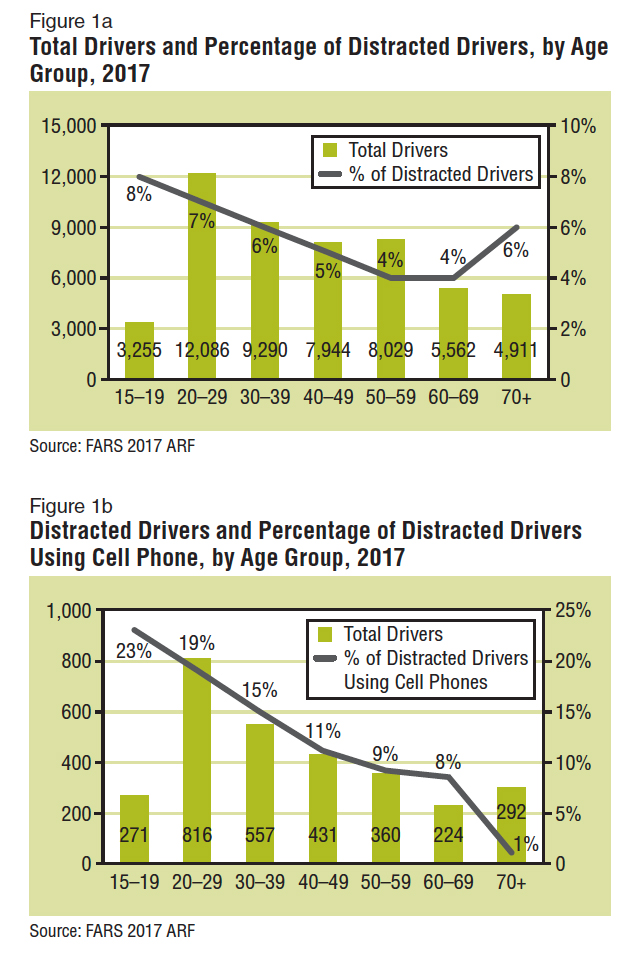So begins a letter from one of our readers. Turns out, there is a problem, and the applied solutions have not been especially helpful. Here’s what we found.
Cell phone usage and texting are not the only causes of distracted driving. The National Highway Traffic and Safety Administration, NHTSA, compiles accident data gathered by local police, and has developed a categorization of the causes of accidents. “Distracted driving” is a subset within the definition of inattention, which most importantly includes fatigue and emotional conditions – road rage is a real thing. Distracted driver occurs when the driver diverts their attention away from driving to some other activity; activity that includes eating or drinking, daydreaming, cell phone use and adjusting radio and climate controls.
The NHTSA only began explicitly identifying and entering data regarding distraction in motor vehicle accidents since 2010. The sample is further limited because of variations in the police accident report (PAR) across jurisdictions, these are the reports that are aggregated by NHTSA. Overall the NHTSA believes there is an underreporting of distraction affected crashes. In one study looking at 379 crashes reported in the three datasets underlying NHTSA statistics the same crash was noted to involve distraction in 11%, 14% and 28% of cases. As you might suspect, on-scene reports reflected the highest reported percentage, as compared to traffic accidents reported subsequently.
“Nearly 303 million people in the United States have cell phones. At any given moment during the daylight hours, more than 800,000 vehicles are being driven by someone using a hand-held cell phone.”[2]
Here are some basic facts, taken from the NHTSA 2016 report [1]:
- There were 34,439 fatal crashes involving 51,914 drivers resulting in 37,461 deaths.
- 30% of these fatal crashes, for comparison, were due to impaired driving, the result of alcohol intoxication or drug use.
- “Distracted affected crashes” accounted for 6% of these crashes, involving 3,210 drivers, and resulting in 3,450 (9%) of all deaths.
- 60% of deaths involved the driver, 25% a passenger, about 14% pedestrians, with the remaining deaths among cyclists and other innocents.
- Drivers, age 15-19 had the highest percentage of distracted drivers in these fatal accidents at 9% followed closely at 7% by drivers age 20-29. Subsequent age groups contributed 5-6% each.
- Cell phones, as a source of distraction, accounted for 14% of the distracted affected crashes. Once again drivers age 15-19 (13%) and 20-29 (35%) lead the way. What should be noted is how much larger a role cell phones play in the cause of distraction, especially in this age group.
- While the number of deaths may be small, the estimates of injury related to cell phone distraction are greater, adding about 30,000 or more

State-level regulations are varied. No state bans all cell phone use by all drivers. Twenty-one states ban the use of hand-held cell phones while driving, 39 states ban cell phone use by “novice” drivers, and 20 states ban the use by school bus drivers. (Really? some states let school bus drivers use their cell phones while working!) Forty-eight states ban texting by drivers, and one of two remaining states bans texting by those dangerous novices.
Like the laws themselves, penalties will vary, again quite a bit. In Utah and Alaska, fines can reach up to $750-1000 and include jail time. New York’s initial fine ranges from $50-200. “In 2018, New York law enforcement officials handed out 197,593 tickets for cell phone and texting violations. This represents about 5.5% of the total number of tickets issued that year.” [3]
How are we doing?
Unfortunately, not well, for either distracted driving or cell phone-related distractions. From 2012 to 2016, the percentages of crashes of all severity that involved distractions fluctuated very little.

Distracted driving is a problem, causing death, injuries, and mayhem. But like many of our behaviors, it will not respond solely to legislation. Perhaps distraction will be reduced by technologic means. As a physician, taking calls at three hospitals over two counties, not being in touch, even when driving, is a problem, I get it. But maybe voice control over our phones, radios, and other automotive controls is not a bad alternative. Given the advances in voice recognition, it would seem an easy opportunity to improve our driving while we continue to wait for those autonomous cars.
[1] The most recent NHTSA report covered through 2017
[2] Data from the National conference of state legislators
[3] From a website managed by Rosenblum Law, Traffictickets.com
Source: NHTSA Traffic Safety Facts Research Note 2012 to 2017 US Department of Transportation




